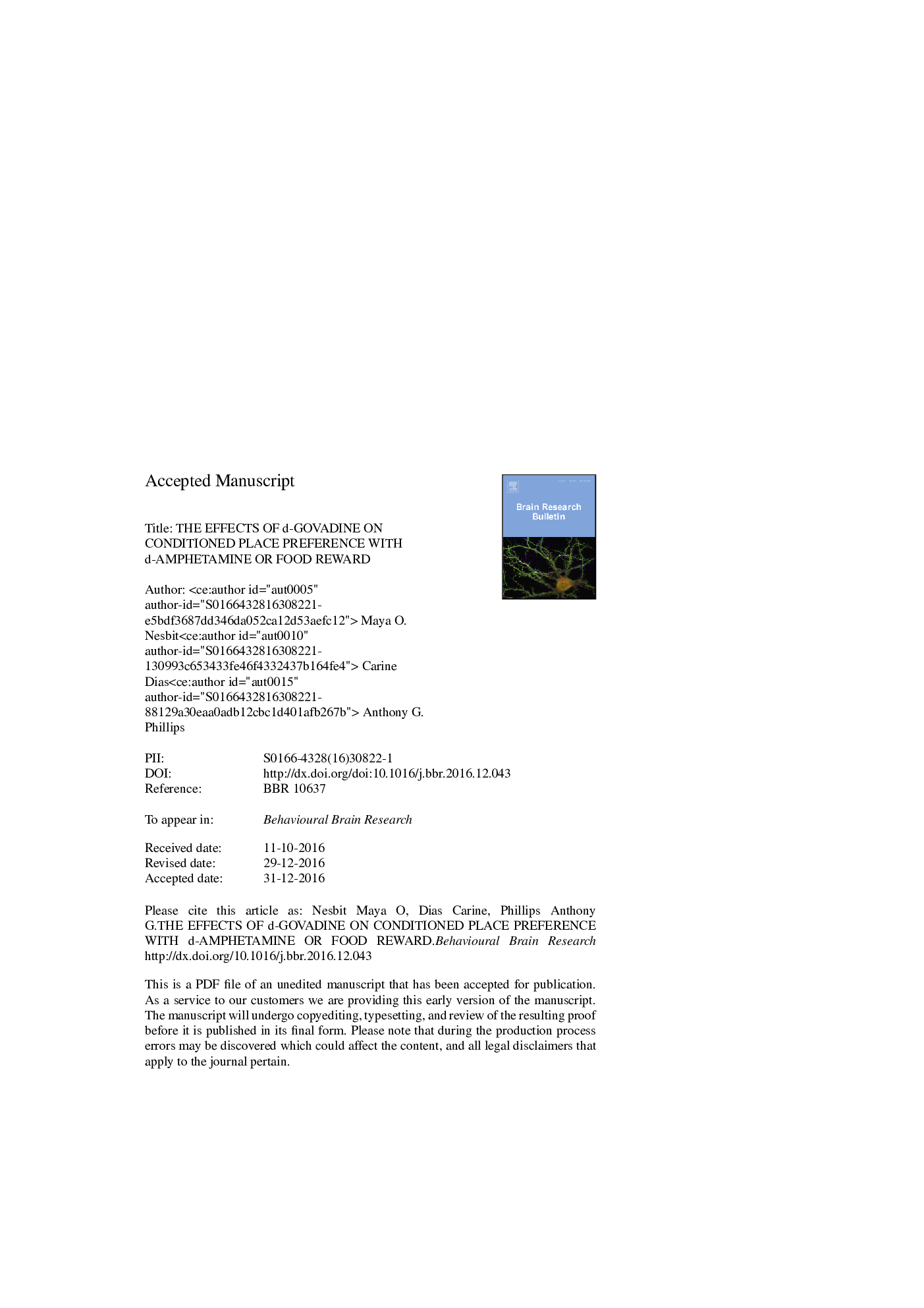| Article ID | Journal | Published Year | Pages | File Type |
|---|---|---|---|---|
| 5735611 | Behavioural Brain Research | 2017 | 37 Pages |
Abstract
Tetrahydroprotoberberines (THPB) have a high affinity for dopamine (DA) D1 and D2 receptors and may provide a novel treatment for drug addiction. We assessed the effects of the THPB d-govadine on the acquisition, expression, extinction and reinstatement of d-amphetamine-(1.5Â mg/kg, i.p.) induced conditioned place preference (CPP). Furthermore, the effects of d-govadine on conditioned association between contextual stimuli and a natural reward were examined using food-induced CPP. In separate experiments, rats received d-govadine (0, 0.5 or 1.0Â mg/kg, i.p.) before a) each d-amphetamine injection during conditioning, b) expression of amphetamine-induced CPP, c) each extinction session, d) amphetamine-induced reinstatement of CPP, or e) placement into a compartment containing food during conditioning. Although d-govadine had no effect on acquisition of amphetamine CPP, treatment with d-govadine during acquisition dose-dependently extinguished a preference for the amphetamine-associated context more quickly than vehicle treatment. Moreover, d-govadine treatment facilitated the extinction of amphetamine CPP when given repeatedly throughout the extinction phase. Although the expression of amphetamine CPP was not affected by d-govadine administered prior to the expression test, amphetamine-induced reinstatement of CPP following an extinction period was blocked by d-govadine (1.0Â mg/kg). The intermediate dose of d-govadine blocked the acquisition of food CPP, whereas the high dose facilitated extinction of this preference as compared to vehicle-treated animals. Therefore, d-govadine attenuates the maintenance of conditioned associations between contextual stimuli and amphetamine or food reward, as well as amphetamine-induced reinstatement of drug seeking behaviour. As such, d-govadine may be a candidate for further development as a pharmacological treatment of psychostimulant drug dependence.
Keywords
Related Topics
Life Sciences
Neuroscience
Behavioral Neuroscience
Authors
Maya O. Nesbit, Carine Dias, Anthony G. Phillips,
